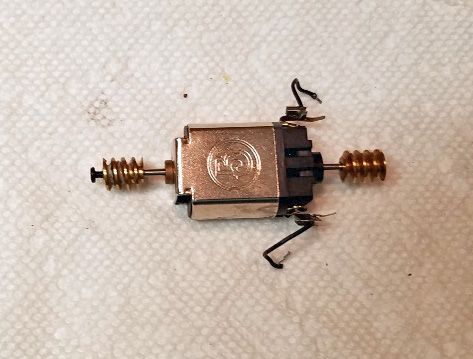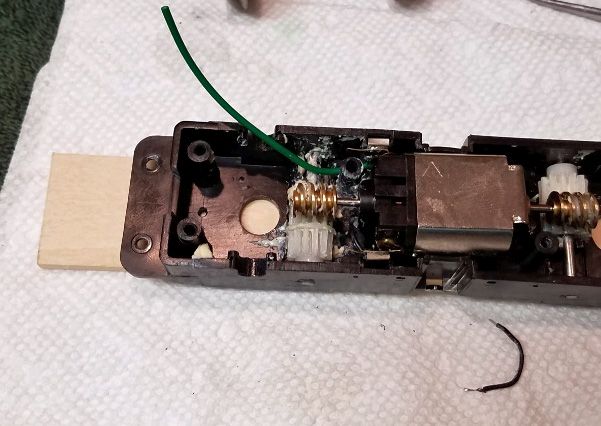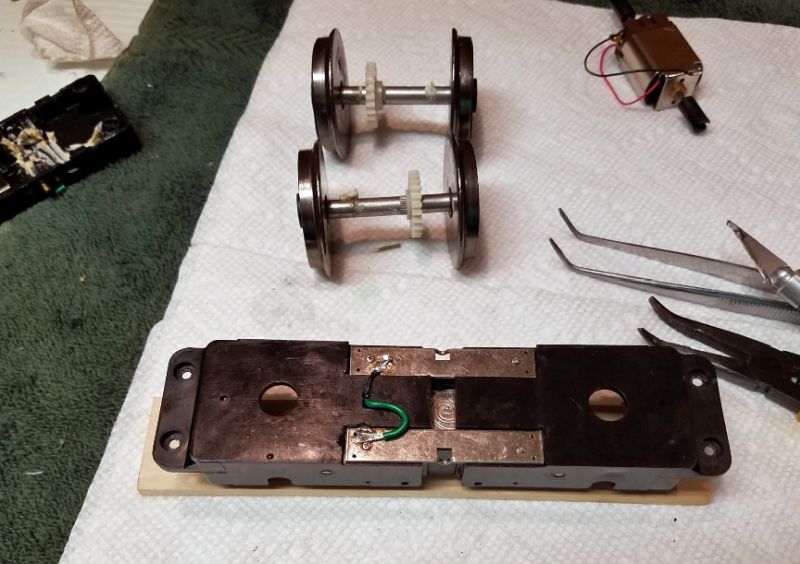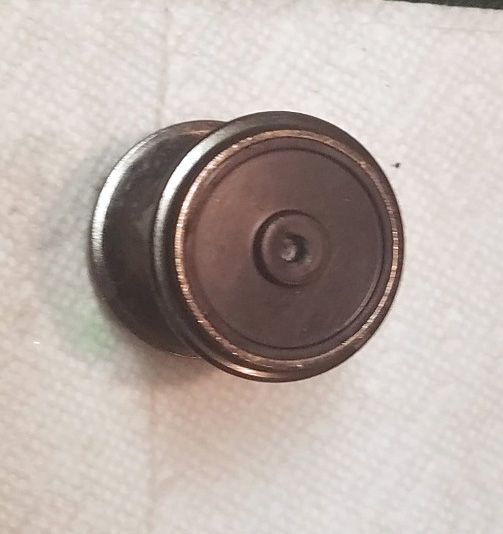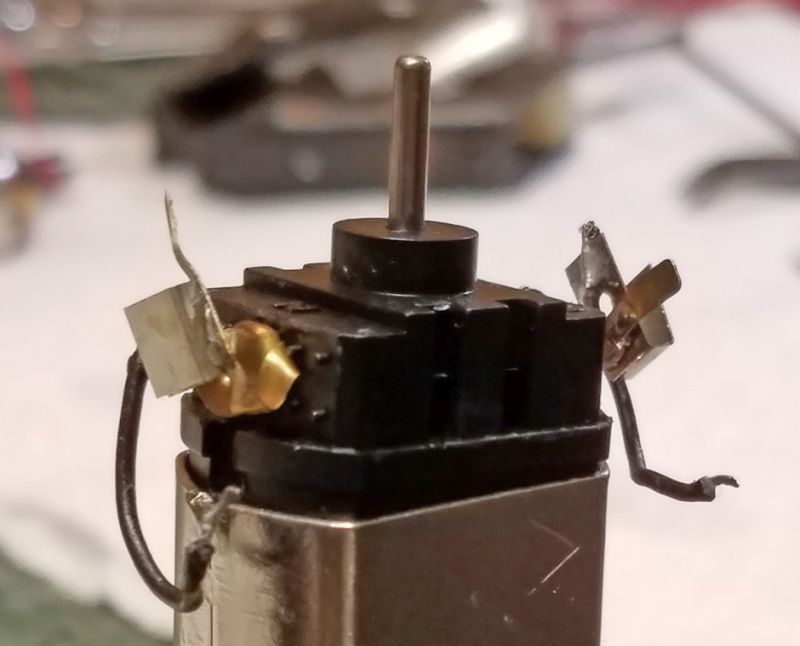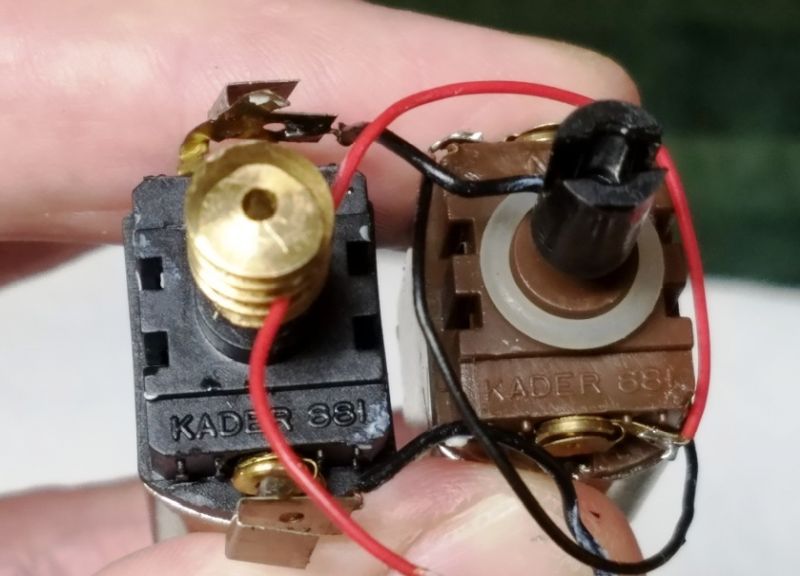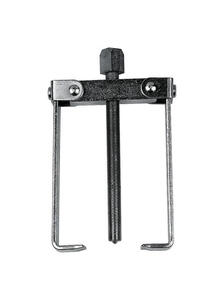Greg Elmassian said:
should be able to use a puller and a torch, since brass will expand faster than steel.
Funny you should mention it. . .
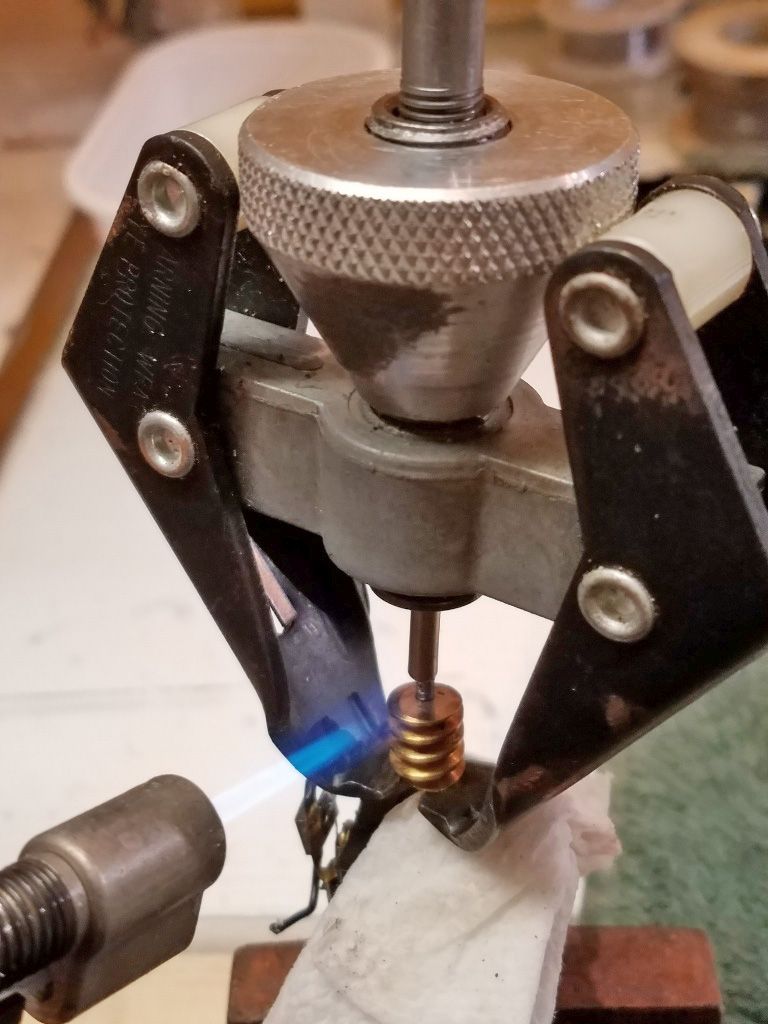
Anyway, to back up a bit. Here’s my wheel/gear puller set to yank the worm off. [I think it was designed for Lionel wheels.]
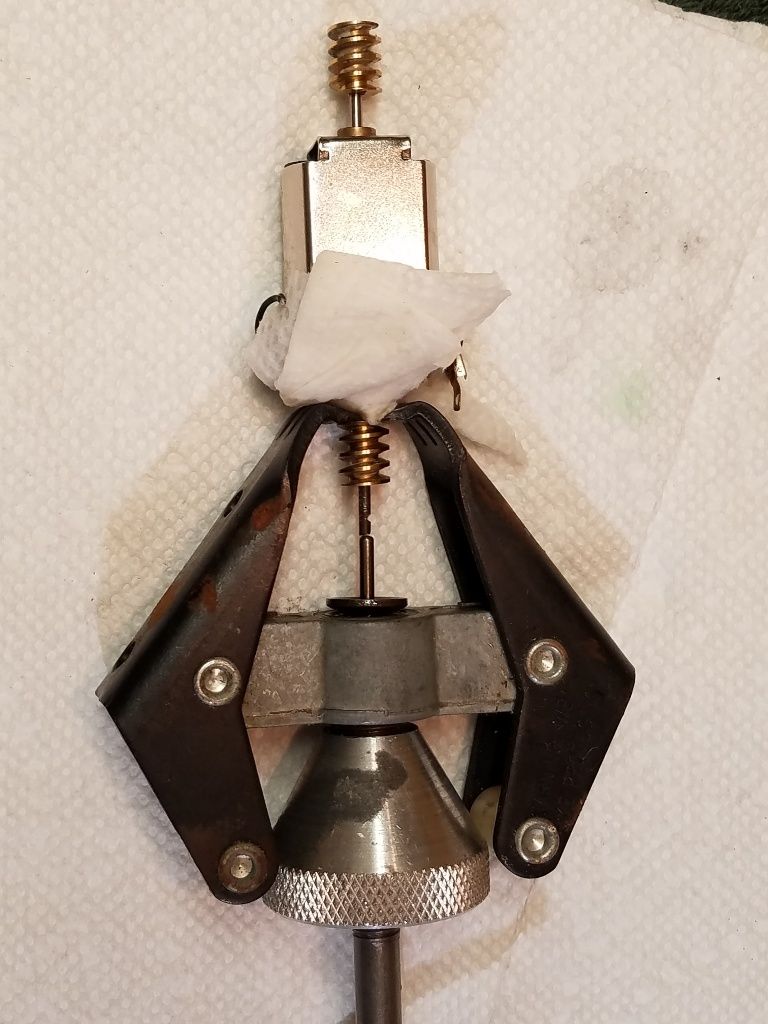
The wet piece of kitchen towel is to act as a heat sink for the flame. I had already tried to pull it but with no success. Part of the issue is that the puller shaft is too big for the worm hole, so I had to use a small steel pin - which didn’t want to connect firmly with the end of the puller’s pin. So a short piece of tubing was found in the parts box.
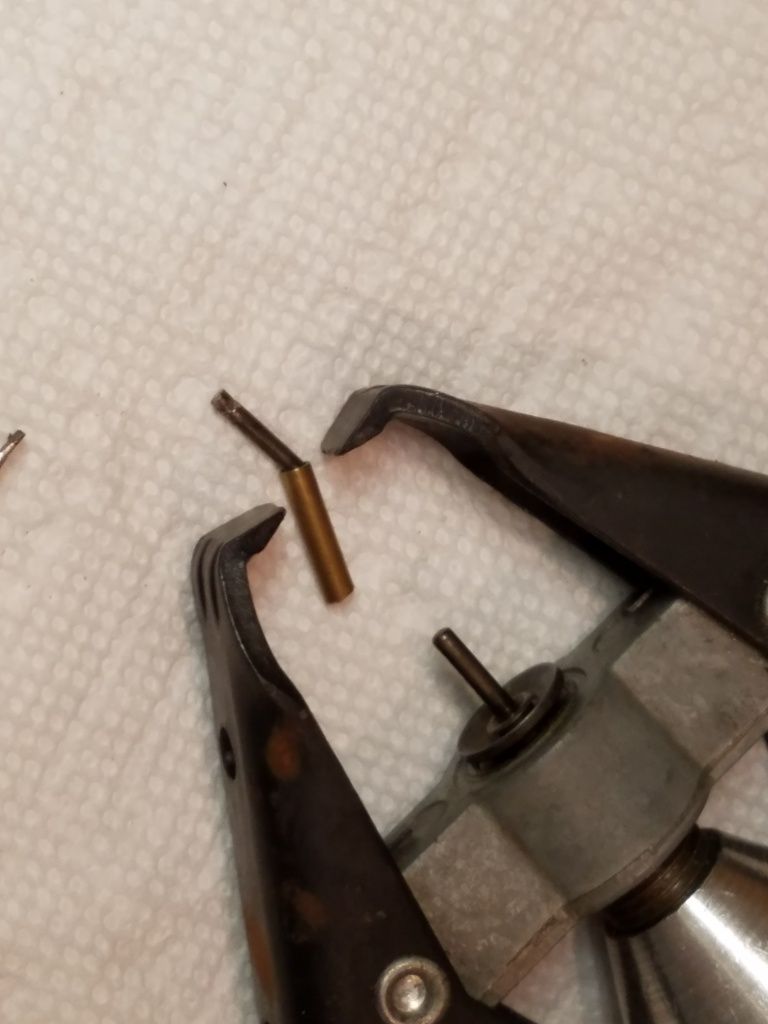
With that in place, and the flame applied, there was a small click and the worm came free. No idea what was keeping it - as the shaft was clean I imagine it was some sort of loctite glue.
I had removed the brushes and springs earlier, surmising they were the problem as one was broken. Having got the worm off, it was easy to pry apart the metal tabs holding the end cap in place and pull it off. You can see the bottom brush holder tube is shiny, but the top one is clogged with something. It may have been over-heated and that’s melted plastic, or it may have been a molding issue which meant the trolley never did turn a wheel before I got it!
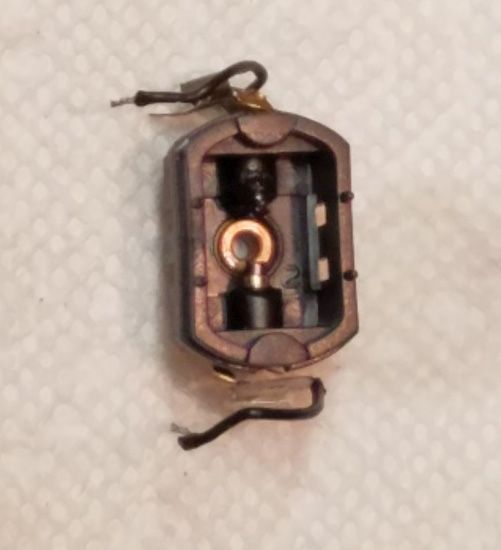
Anyway, I cleaned it off and poked a metal pin through and all seemed well. I then put the end cap back on my motor, deciding to use it instead of the new one, for 2 reasons: (1) the brush gear has some complicated bits of metal soldered to it for connection to the pickups and (2) I’m still unclear about the 12V versus 18V windings, so I thought it might be better to use the one I had. The commutator looked used, so maybe it had run before I got it and had overheated.
Here’s the endcap and brush holders from the outside. I’m using a flat-head punch to bend the tabs back on the motor case to hold the endcap in place, and supporting the motor on the vice. Note the brush holder - the metal bit, that you can’t really see as it is bent up towards you, is a round tab the is bent over the spring when you have inserted brush and spring in the hole. Not a very good mechanical solution, but the springs are quite light.
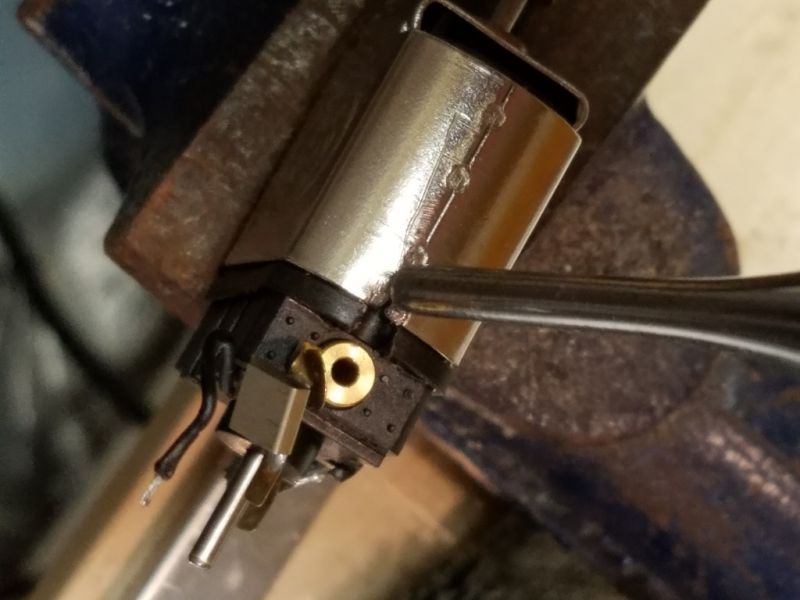
This is a brush spring out of the new motor - those screws are the usual B’mann for holding the bottom plate; about 1/4" long.
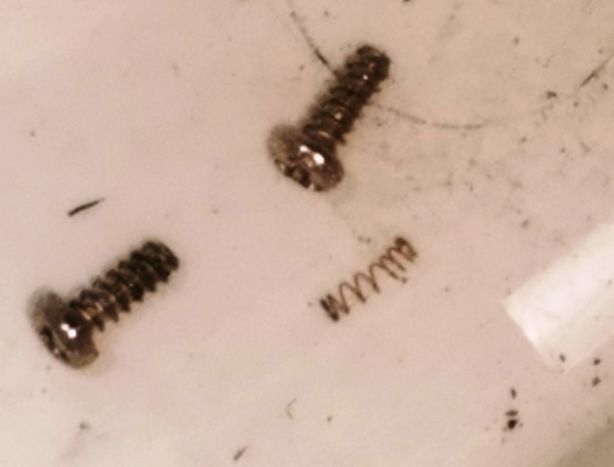
The springs are very easy to lose - I carefully saved one from the original exercise before I found this motor and now I cannot find it, and this one sprang out of my hand and is somewhere in my workshop along with the first one I lost. Fortunately I ended up with 2 springs so I could replace the brushes and springs…
And that was it. I dug out the old Atlas power pack and connected it to the motor and it runs. $26.60 for a pair of brush springs!
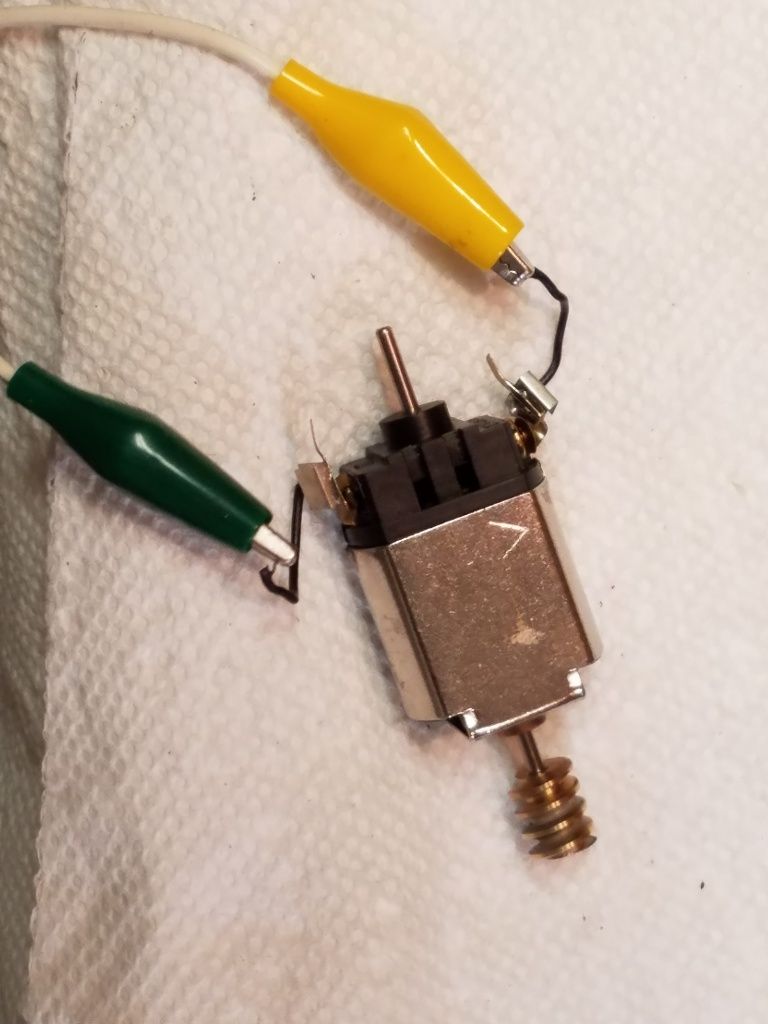
I will bash the worm back on the shaft and put it all together, and take it round to Jerry’s SC&M for track testing.
Oh, and I need to sell it - no room on the shelf for it. It so far cost me $76, so offers around there accepted.







